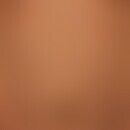Synonym(s)
DefinitionThis section has been translated automatically.
Group of rare hereditary skin diseases (genodermatoses) characterized by mutation-related disturbance of the structural and functional integrity of intraepidermal adhesion or dermoepidermal anchorage by skin fragility and blistering of skin and mucosa. The disorders occur after minor mechanical or thermal trauma. Extracutaneous manifestations and their complications in other epithelium-bearing organs make the hereditary bullous epidermolyses multisystem diseases with sometimes dramatic morbidity.
Classification is based on genetic, clinical, electron microscopic, immunohistologic (immunomapping), and molecular biologic criteria. According to the position of the blister formation in relation to the dermoepidermal basement membrane, epidermolyses are divided into 4 groups:
Epidermolytic blistering:
- suprabasal and
- basal cleft formation
Cytolysis of keratinocytes(epidermolysis bullosa simplex group).
Junctiolytic bl istering: loss of continuity in the lamina lucida area of the basement membrane(epidermolysis bullosa junctionalis group).
Dermolytic bl istering: cleavage formation below the basement membrane(epidermolysis bullosa dystrophica group).
Variable blistering: cleavage intraepidermal/junctional/dermal (Kindler syndrome ).
While the first two forms do not lead to scarring, the blisters in the latter forms heal with scarring.
ClassificationThis section has been translated automatically.
Epidermolysis bullosa simplex group
Epidermolysis bullosa simplex Weber-Cockayne (localized) (EBS-WC)
Epidermolysis bullosa simplex Köbner (generalized) (EBS-K)
Epidermolysis bullosa simplex Dowling Meara (herpetiform type) (EBS-DM)
Rare subtypes of the EB simplex group
- Epidermolysis bullosa simplex with muscular dystrophy (EBS-MD)
- Epidermolysis bullosa simplex with pyloric atresia
- Epidermolysis bullosa simplex Ogna
- Epidermolysis bullosa simplex with patchy hyperpigmentation (EBS-MP)
- Epidermolysis bullosa simplex, autosomal recessive with Bp230 deficiency (EBS3)
- Epidermolysis bullosa simplex with mutations in KLHL24
- Superficial epidermolysis bullosa simplex (SEBS)
- Acral peeling skin syndrome, with circumscribed keratolysis
- Hypotrichosis and recurrent skin vesicles (HYPTSV/OMIM: 613102), mutation in DSC3 gene (see there)
Epidermolysis bullosa junctionalis group (EBJ)
Epidermolysis bullosa junctionalis generalized severe (historically:type Herlitz )(JEB-H)
Epidermolysis bullosa junctionalis generalized, intermediate (historically: JEB-non-Herlitz (JEB nH))
Epidermolysis bullosa junctionalis localized (historically: JEB nH)
- Epidermolysis bullosa junctionalis localized, acral type
- Epidermolysis bullosa junctionalis localized, inverse type
- Laryngo-onychocutaneous syndrome (LOC syndrome)
Other rare subtypes of junctional EB
- Epidermolysis bullosa junctionalis with pyloric atresia (JEB-PA)
- Epidermolysis bullosa junctionalis with hypacusis
- Epidermolysis bullosa junctionalis with lung and kidney involvement
Epidermolysis bullosa dystrophica group (EBD)
- Epidermolysis bullosa dystrophica dominans (DEBD/ syn.: dominant EBD)
- Epidermolysis bullosa dystrophica recessive, generalized severe (historically: Hallopeau-Siemens type)
- Epidermolysis bullosa dystrophica recessive, generalized intermediate
Rare subtypes of dystrophic EB
- Epidermolysis bullosa dystrophica inversa (REBD-I)
- Epidermolysis bullosa dystrophica praetibialis (DEBD-Pt)
- Epidermolysis bullosa dystrophica albopapuloidea (formerly Pasini type)
- Transient bullous dermolysis of the newborn (TBDN-EBD)
- Dominant EBD with pruritus (DEBD-Pr)
- "Nails only"
You might also be interested in
Occurrence/EpidemiologyThis section has been translated automatically.
Incidence for the entire group of diseases: 2.0/100,000 live births/year. The hereditary epidermolyses belong to the rare(orphan diseases) diseases.
EtiopathogenesisThis section has been translated automatically.
EB- exhibits a large molecular heterogeneity. Thus, >1500 mutations in 19 genes encoding components of the keratin filaments of the cytoskeleton, adherens junctions, desmosomes and hemidesmosomes have been described so far.
The "index genes" are also expressed in other organs (gastrointestinal, respiratory and urogenital tracts).
The leading symptom on all epithelia is moderate to extreme vulnerability with formation of blisters and sequelae such as erosions, crusts, scars and their sequelae. Since the corresponding structural proteins are expressed in the skin as well as in mucous membranes or in other organs (muscles, lungs, kidneys), extracutaneous manifestations occur depending on the genotype.
Since epidermolyses are mostly polygenic and not monogenic diseases, it is evident that the "disease-causing" mutations alone cannot explain the full clinical picture, but that the phenotype is caused by the interaction of several genes as well as by environmental influences. Furthermore, even mutations in a single gene show great variability in phenotype.
The primary, structural-functional defects also influence secondary epigenetic phenomena (induction of inflammatory cascades, influence of the microenvironment) and thus in turn the individual phenotype.
Epidermolysis bullosa simplex group (EBS); most common EB type (75% of cases). The common features of the EBS subtypes are:
- Genetics: Mostly autosomal dominant inheritance. Missense mutations in the genes coding for keratin 5 or 14 (KRT5; KRT14) and those coding for desmoplakin and plakoplakin, respectively. The significance of the recently discovered mutation in the KLH24 gene remains to be seen (HeY 2016).
- Histology: Intraepidermal blistering by cytolysis of basal/suprabasal keratinocytes (epidermolytic blistering).
- Antigen mapping: Intraepidermal cleft formation with hemidesmosome markers at the blister base.
- Electron microscopy: Intracellular cytolysis above the hemidesmosomes in the basal keratinocytes.
- Clinic: Healing of blister formation without scars. The pruritus occurring in this group seems to be triggered by the releasing cytokine"Thymic Stromal Lymphopoietin", which also has a pathogenetic significance in atopic eczema.
Epidermolysis bullosa junctionalis (EBJ) group. The common features of the EBJ subtypes are:
- Genetics: Autosomal recessive inheritance; heterogeneous genetic background; at least 6 index genes (genes encoding laminin, integrin, and type VII collagen).
- Histology: blisters in the lamina lucida of the basement membrane.
- Antigen mapping: Junctional, suprabasal blistering with hemidesmosome markers on the blister roof and lamina densa markers on the blister floor.
- Clinic: Very heterogeneous, late-onset localized forms and early lethal forms (Herlitz type). Healing without scarring (suprabasal blister); however, skin atrophy develops with prolonged course.
- Electron microscopy: Junctional blister, rudimentary or absent hemidesmosomes on blister roof and blister floor.
Epidermolysis bullosa dystrophica group (EBD). The common features of EBD subtypes are:
- Genetics: Autosomal dominant or recessive inheritance; mutations in the collagen VII gene (COL7A1).
- Histology: Dermolytic blistering.
- Antigen mapping: Lamina densa markers are found on the blister roof. Staining with collagen VII is reduced or negative.
- Clinic: Scarring, milia, nail loss.
- Electron microscopy: blistering below the lamina densa.
Poikilodermic Kindler syndrome . Autosomal recessive Kindler syndrome is listed as the 4th group of EB:
- The cleft formation of Kindler syndrome is called mixed. The defective protein Kindlin-1 plays a significant role in cell adhesion. Acral blistering, generalized poikiloderma as well as photosensitivity are the dominant clinical symptoms.
Differential diagnosisThis section has been translated automatically.
- Acquired diseases:
- Traumatic blistering
- Mastocytosis, bullous
- Infectious diseases:
- Bullous autoimmune diseases:
- Hereditary and congenital diseases:
- Peeling skin syndrome
- Congenital Porphyria
- acrodermatitis enteropathica
- incontinentia pigmenti
- aplasia cutis congenita
- Ectodermal dysplasia with plakophilin deficiency
- Poikiloderma (see Kindler syndrome below).
General therapyThis section has been translated automatically.
Overall, treatment is unsatisfactory and predominantly symptomatic. Genetic counselling of affected families, if necessary use the possibilities of prenatal diagnostics.
In dystrophic forms, physiotherapeutic measures to prevent contractures are important and surgical interventions may be necessary, especially to improve the function of the hands.
Overall, the aggressiveness of treatment should correspond to the severity of the clinical picture. In the case of non-dystrophic epidermolyses, the prevention of secondary infections is of primary importance. In the case of dystrophic changes, the preservation of as high a quality of life as possible, i.e. the avoidance of secondary damage (e.g. scarring, scar contractures in the area of the eyes, mucous membranes and oesophagus, anaemia and vitamin deficiency due to restricted nutrition, skin carcinomas, secondary infections). Patients may have difficulty with food intake due to painful involvement of the mucosa, among other things. Therefore pay attention to nutrition with sufficient vitamins and minerals, if necessary passaged food, if necessary diet plan.
Further things to consider: Wear soft, non-abrasive clothing, avoid rough seams, if necessary wear the clothing inside out or resew the seams. Appropriately padded underlay, if necessary gel underlay or air cushion bed. Cleaning, if necessary disinfecting baths for erosions, sterile dressings. In case of extensive erosions, dressing with hydrogel (e.g. Intrasite) or hydrocolloid films (e.g. Varihesive E). For children, padded furniture and floors.
External therapyThis section has been translated automatically.
The focus is on avoiding mechanical irritation and irritation as well as monitoring and treating secondary infections. Drying and antiseptic solutions such as quinolinol solution(e.g. Chinosol 1:1000), R042 or potassium permanganate solution(light pink), if necessary polihexanide (Serasept, Prontoderm). Wound treatment if necessary, see there. Sufficient fluid replacement. Sterile lancing and emptying of the blisters prevents them from expanding and relieves pressure. The bladder roof should be left in place to protect against infection. External glucocorticoids such as 0.1% triamcinolone cream(e.g. Triamgalen) only for eczematization and itching. General skin care (e.g. with Ungt. emulsif. aq. or 2% urea cream).
On 24.06.2022, the Committee for Medicinal Products for Human Use (CHMP) of the EMA granted marketing authorization for Filsuvez® birch bark extract for the treatment of superficial wounds associated with dystrophic and junctional epidermolysis bullosa.
Internal therapyThis section has been translated automatically.
TablesThis section has been translated automatically.
Classification of hereditary bullous epidermolyses (EB) modified according to Schumann
Disease pattern |
OMIM | Gene(s)/protein(s) |
Gene locus |
| EBsimplex subtypes with suprabasal cleft formation | |||
| Acral peeling skin syndrome | 270300 | TGM5 (transglutmainase5) | 15q15.2 |
| Ectodermal dysplasia skin fragility syndrome | 604536 | PKP1 (plakophilin) | 1q31.2 |
| Skin fragility syndrome with woolly hairs and palmoplantar keratoses | 607655 | DSP/JUP(desmoplakin/plakoglobulin) | 6p24.3/17q21.2 |
| Acantholytic epidermolysis bullosa | 609638 | DSP/JUP(desmoplakin/plakoglobulin) | 6p24.3/17q21.2 |
| EBsimplex subtypes with basal cleavage (autosomal dominant) | |||
| 131900 | 12q13/17q21.2 | ||
Epidermolysis bullosa simplex, localized (Weber-Cockayne type) |
131800 | 12q13.13/17q21.2 | |
| Epidermolysis bullosa simplex, localized (Weber-Cockayne type) | 131800 | ITGB4/Beta4 integrin | 17q25.1 |
| 131760 | KRT14 (keratin 14) |
17q21.2 | |
Epidermolysis bullosa simplex type Ogna (Gedde-Dahl) |
131950 | PLEC (plectin 1) |
824.3 |
| 131960 | KRT5 (Keratin 5) |
12.q13 | |
| Epidermolysis bullosa simplex with mutations in KLHL24 | 617294 | KLHL24 (Kelch like protein member 24) | 3q27.1 |
| EBsimplex subtypes with basal cleavage (autosomal recessive) | |||
| Epidermolysis bullosa simplex with muscular dystrophy and mutation in PLEC | 226670 | PLEC (plectin) | 8q24.3 |
| Epidermolysis bullosa simplex with pyloric atresia and mutation in PLEC | 612138 | PLEC (plectin) | 8q24.3 |
| Epidermolysis bullosa simplex with mutation in PLEC isoform 1a | - | PLEC (plectin isoform 1a (P1a) | |
| 601001 | KRT14(keratin 14) | 17q21.2 |
|
Epidermolysis bullosa simplex, basal, autosomal recessive, with mutation in DST |
615425 | DST (BP230) | 6p12.1 |
| Epidermolysis bullosa simplex, basal, autosomal recessive, with mutation in EXPH5 | 615028 | EXPH5 (exophilin) | 11q22.3 |
| EBjunctionalis subtypes | |||
Epidermolysis bullosa junctionalis, generalized severe (historically: Herlitz type) |
226700 | LAMA3,LAMB3,LAMC2 (Laminins alpha3, beta3, gamma2) |
18q11.2/1q23.2/1q25.3 |
Epidermolysis bullosa junctionalis generalized intermediate (historical: type non-Herlitz) |
226650 | LAMA3/LAMB3/LAMC2(Laminins)/ COL17A1 (CollagenXVII) |
18q11.2/1q23.2/1q25.3/1q24.3-q25.1 |
| Epidermolysis bullosa junctionalis localized with subtypes: localized acral, localized inverse, LOC syndrome. | 245560 |
LAMA3/LAMB3/LAMC2(laminins) / COL17A1 (collagenXVII)/ITGB4 (integrin beta4) | 18q11.2/1q23.2/1q25.3/1q24.3-q25.1/17q25.4 |
Laryngo-onycho-cutaneous syndrome (LOC syndrome) |
245560 | LAMA3/LAMB3/LAMC2(Laminins) | 18q11.2 |
Epidermolysis bullosa junctionalis with pyloric atresia (JEB-PA) |
226730 | ITGA6, ITGB4 (alpha6 integrin, beta4 integrin) |
2q31.1/17q25.4 |
| Epidermolysis bullosa junctionalis with lung and kidney involvement | 614748 | ITGA3 (Inteegrin alpha3) | 17q21.33 |
| 226730 | ITGA6 (alpha6 integrin), ITGB4 (beta4 integrin) |
2q31.1/17q11-qter | |
| Epidermolyis bullosa dystrophica recessive | |||
Epidermolysis bullosa dystrophica recessive, severe generalized (historically: Hallopeau-Siemens type) |
226600 | COL7A1 (CollagenVII) |
3p21.31 |
Epidermolysis bullosa dystrophica recessive, generalized intermediate (historical: RDEB non-Hallopeau-Siemens) |
226650 |
COL7A1 (CollagenVII) |
3p21.31 |
| 226600 | COL7A1 (CollagenVII) | 3p21.31 | |
| 131850 | COL7A1 (CollagenVII) | 3p21.31 | |
| 604129 | COL7A1 (CollagenVII) | 3p21.31 | |
| Bullous dermolysis of the newborn | 131705 | COL7A1 (CollagenVII) | 3p21.31 |
| Epidermolyis bullosa dystrophica dominant | |||
| Epidermolysis bullosa dystrophica dominant, generalized | COL7A1 (CollagenVII) | 3p21.31 | |
| Epidermolysis bullosa dystrophica albopapuloidea (historical type Pasini) | 131750) | COL7A1 (CollagenVII) | 3p21.31 |
Epidermolysis bullosa dystrophica, dominant, acral |
131750 | COL7A1 (CollagenVII) | 3p21.31 |
Epidermolysis bullosa dystrophica, recessive with congenital absence of skin and nail dystrophy (see below for dominant phenotype) |
132000 | COL7A1 (collagenVII) | 3p21.31 |
Epidermolysis bullosa dystrophica "nails only" (Isolated toe nail dystrophy) |
607523 | COL7A1 (CollagenVII) | 3p21.31 |
| 131705 | COL7A1 (CollagenVII) | 3p21.31 | |
| Kindler syndrome | |||
| Kindler syndrome | 173650 | FERMT1 (Kindlin-1) | 20p12.3 |
Note(s)This section has been translated automatically.
Remember! Since 2003, an Epidermolysis bullosa Centre has been in existence at the University Dermatology Clinic Freiburg, supported by the BMBF and the DEBRA International Foundation. This includes the clinical care of patients with Epidermolysis bullosa as well as morphological and molecular diagnostics and the processing of scientific questions concerning hereditary skin diseases. Patients can be registered at the address below.
- EB Centre Freiburg
- telephone: 0761-270-6614
- Fax: 0761-270-6791
- Email: [email protected]
- Website: www.netzwerk-eb.de
The Centre also acts as the coordinating body of the national competence network Epidermolysis bullosa.
LiteratureThis section has been translated automatically.
- Bauer JW et al (1999) Prenatal diagnosis of recessive hereditary dystrophic epidermolysis bullosa with haplotype analysis of the type VII collagen gene. Dermatologist 50: 121-126
- Bauer JW et al (2001) Large melanocytic nevi in hereditary epidermolysis bullosa. J Am Acad Dermatol 44: 577-584.
- Bruckner-Tuderman L (1995) Epidermolysis bullosa hereditaria. Dermatologist 46: 61-72
- Has C (2018) Hereditary epidermolyses. In: Plewig G et al. Braun-Falco`s dermatology, venereology and allergology. Springer Reference Medicine pp.823-838
- He Y et al.(2016) Monoallelic mutations in the translation initiation codon of KLHL24 cause skin
- Fragility. Am J Hum Genet 99:1395-1404.
- Jonkman MF et al (1999) Hereditary skin diseases of hemidesmosomes. J Dermatol Sci 20: 103-121.
- Laimer M et al.(2015) Hereditary epidermolyses JDDG 13: 1125-1134.
- Schumann H (2009) Epidermolysis bullosa. Dermatologist 60: 614-618
- Shimizu H, Suzumori K (1999) Prenatal diagnosis as a test for genodermatoses: its past, present and future. J Dermatol Sci 19: 1-8
- Woodley DT et al (2003) Normal and gene-corrected dystrophic epidermolysis bullosa fibroblasts alone can produce type VII collagen at the basement membrane zone. J Invest Dermatol 121: 1021-1028.
- Has C et al (2020) Consensus reclassification of inherited epidermolysis bullosa and other disorders with skin fragility. Br J Dermatol 183: 614-627
Incoming links (39)
Acral peeling skin syndrome; ATP2C1 Gene; Back mutation; Dental diseases, skin changes; Dermolysis transient, bullous of the newborn; Dystrophia bullosa hereditaria - type maculatus seu amsterdam; Dystrophic epidermolysis bullosa inversa ; Epidermolysis; Epidermolysis bullosa; Epidermolysis bullosa and congenital localized absence of the skin; ... Show allOutgoing links (77)
Acral peeling skin syndrome; Acrodermatitis enteropathica; Antibiogram; Antibiotics; Aplasia cutis congenita (overview); Basal membrane; Bullous Pemphigoid ; Candidoses; COL7A1 Gene; Contagious impetigo; ... Show allDisclaimer
Please ask your physician for a reliable diagnosis. This website is only meant as a reference.




